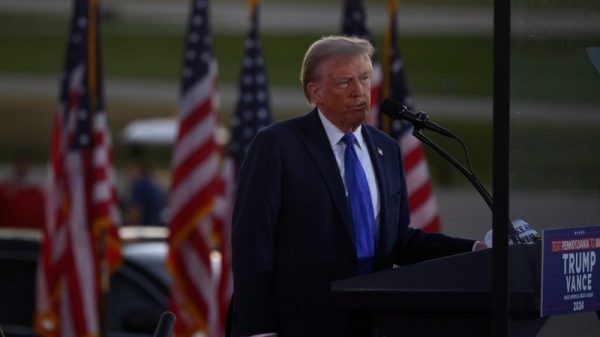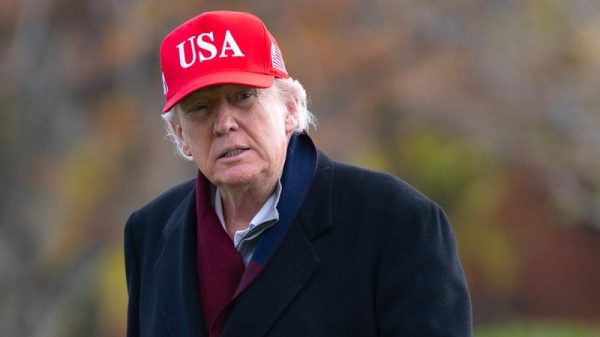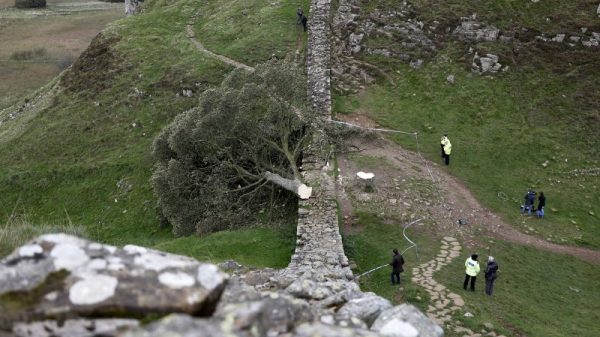From Tokyo rice markets to Wall Street trading floors, candlestick patterns have stood the test of time.
Now, in the high-stakes world of cryptocurrency trading, where government policies can shift the market overnight, understanding these patterns could mean the difference between profit and loss.
In such a volatile environment, traders have continuously searched for signals amid the chaos, and many have claimed that these patterns offer a guiding light.
But how do these candlestick patterns work, and why do traders rely on them? Here’s what you need to know.
History of candlestick patterns
Candlestick charting traces its origins to 18th century Japan, where Munehisa Homma, a wealthy rice trader from Sakata, developed a system to analyze price movements in the rice futures market.
Homma meticulously recorded price fluctuations and identified patterns that reflected market sentiment, realizing that emotions such as fear and greed played a crucial role in price action. His insights allowed him to anticipate market trends, reportedly leading to immense trading success.
Homma’s techniques evolved into a structured system known as the Sakata Rules, which later laid the foundation for modern candlestick patterns. These rules emphasized the importance of recognizing repetitive price formations and interpreting their psychological implications.
Homma’s pioneering work made him legendary in Japan’s trading circles, with some historical accounts claiming he executed 100 consecutive winning trades using his methodology.
Candlestick charts remained largely unknown outside Japan until the late 20th century, where Steve Nison, an American technical analyst, introduced candlestick charting to Western financial markets in the 1980s.
Through extensive research, Nison translated and refined Japanese candlestick techniques, integrating them into modern technical analysis. His 1991 book, Japanese Candlestick Charting Techniques, became a seminal work, widely regarded as the definitive guide on the subject.
Key candlestick patterns you need to know
Candlestick patterns provide traders with crucial insights into market sentiment, signaling potential reversals, continuations, or periods of indecision. These patterns are categorized into three main types:
Bullish patterns indicating possible uptrends
Bearish patterns signaling potential downtrends
Neutral patterns suggesting indecision or continuation
Bullish patterns
Bullish candlestick patterns typically appear after a downtrend, signaling a potential shift in momentum as buying pressure increases. These patterns suggest that buyers are stepping in and that a reversal to the upside may be underway.
Bullish engulfing
Bullish engulfing candlestick pattern.
Image via commons.wikimedia.org.
Bullish engulfing: A two-candle pattern where a small bearish candle is followed by a larger bullish candle that completely engulfs the previous day’s body. This formation suggests a strong shift in momentum, as buying pressure overwhelms selling pressure. The larger the engulfing candle, the more powerful the signal.
Hammer
Hammer candlestick pattern.
Image via commons.wikimedia.org.
Hammer: A single candlestick with a small body near the top of its range and a long lower shadow. It appears after a downtrend and signals that despite initial selling pressure, buyers regained control and pushed prices back up. A hammer is more reliable when it forms near a significant support level.
Inverted hammer
Inverted hammer candlestick pattern.
Image via commons.wikimedia.org.
Inverted hammer: Similar to the hammer, but with a small body at the lower end of the range and a long upper shadow. This pattern suggests that buyers attempted to push prices higher after a decline, potentially signaling a reversal. It requires confirmation from the next candle closing higher.
Morning star
Morning star candlestick pattern.
Image via commons.wikimedia.org.
Morning star: A three-candle formation that signifies a trend reversal. It starts with a long bearish candle, followed by a small-bodied candle (which may be bullish or bearish) that gaps down, and finally, a strong bullish candle that closes well into the first candle’s body. This pattern suggests that bearish momentum is weakening and buyers are taking control.
Three white soldiers
Three white soldiers candlestick pattern.
Image via commons.wikimedia.org.
Three white soldiers: A powerful bullish pattern made up of three consecutive long bullish candles with small or no wicks. Each candle opens within the previous candle’s body and closes progressively higher. This pattern suggests a strong and sustained uptrend, particularly when accompanied by high volume.
Bearish patterns
Bearish candlestick patterns appear after an uptrend, signaling a potential reversal as selling pressure increases. These formations suggest that buyers are losing momentum, and a downward move may be imminent.
Bearish engulfing
Bearish engulfing candlestick pattern.
Image via commons.wikimedia.org.
Bearish engulfing: The opposite of the bullish engulfing pattern, this formation occurs when a small bullish candle is followed by a larger bearish candle that completely engulfs the previous day’s body. This suggests a shift from buying to selling pressure, often signaling the start of a downtrend.
Shooting star
Shooting star candlestick pattern.
Image via commons.wikimedia.org.
Shooting star: The shooting star is a single candle with a small body near the lower end of the trading range and a long upper shadow. It indicates that buyers pushed prices higher, but strong selling pressure forced prices back down, making it a potential reversal signal.
Hanging man
Hanging man candlestick pattern.
Image via commons.wikimedia.org.
Hanging man: Resembling the hammer, the hanging man appears at the top of an uptrend instead of the bottom. It has a small body and a long lower shadow, signaling that selling pressure is starting to emerge. A confirmation from the next candle closing lower strengthens this bearish signal.
Evening star
Evening star candlestick pattern.
Image via commons.wikimedia.org.
Evening star: The bearish counterpart to the morning star, this three-candle pattern starts with a strong bullish candle, followed by a small-bodied candle that gaps up, and then a long bearish candle that closes well into the first candle’s body. This signals a transition from bullish to bearish momentum.
Three black crows
Three black crows candlestick pattern.
Image via commons.wikimedia.org.
Three black crows: This pattern consists of three consecutive long bearish candles with small wicks, each opening within the previous candle’s body and closing progressively lower. It signals strong selling pressure and the likelihood of a continued downtrend.
Neutral patterns
Neutral candlestick patterns signal market indecision and can lead to either a continuation of the existing trend or a reversal. Traders should consider additional indicators or confirmation signals before acting on these patterns.
Doji
Doji candlestick pattern.
Image via commons.wikimedia.org.
Doji: A candlestick where the opening and closing prices are nearly identical, resulting in a small or nonexistent body. Doji patterns indicate market indecision and can appear in various forms:
Standard doji: Signals uncertainty, often preceding a breakout or reversal.
Gravestone doji: A bearish signal, with a long upper shadow and no lower shadow, indicating rejection at higher prices.
Dragonfly doji: A bullish signal, with a long lower shadow and no upper shadow, showing strong buying interest.
Spinning top
Spinning top candlestick pattern.
Image via commons.wikimedia.org.
Spinning top: Featuring a small body with long upper and lower shadows, the spinning top reflects a tug-of-war between buyers and sellers, often signaling consolidation or a possible trend reversal.
Combining candlestick patterns with indicators
While candlestick patterns provide valuable insights into market sentiment, relying on them alone can lead to false signals, especially in a volatile market like Bitcoin.
To increase accuracy, traders often combine these patterns with technical indicators that help confirm trends, momentum and potential reversals. Below are some of the most effective indicators to use alongside candlestick patterns:
Moving averages — Moving averages smooth out price fluctuations and help traders identify the prevailing trend. They can also act as dynamic support and resistance levels.
Application: If a bullish candlestick pattern (eg., bullish engulfing, morning star) appears while Bitcoin’s price is above a key moving average (such as the 50 day or 200 day MA), this strengthens the signal that an uptrend may continue.
Conversely, if a bearish candlestick pattern (eg., bearish engulfing, shooting star) forms below a moving average, it increases the likelihood of further downside.
Relative Strength Index (RSI) — RSI measures the speed and magnitude of price movements on a scale of zero to 100. A reading above 70 suggests overbought conditions (potential reversal or pullback), while a reading below 30 suggests oversold conditions (potential buying opportunity).
Application: A bullish candlestick pattern forming when RSI is below 30 strengthens the case for a trend reversal (eg., a Hammer appearing in oversold conditions could indicate a strong buying opportunity).
A bearish candlestick pattern forming when RSI is above 70 suggests that the price may be primed for a pullback (eg., a Shooting Star forming in overbought conditions signals potential downside).
Volume analysis – Volume represents the number of trades executed and provides insight into the strength behind price movements. A price move with high volume is more significant than one with low volume.
Application: If a bullish reversal pattern (eg., morning star) appears with high volume, it confirms strong buyer interest and increases the likelihood of a sustained uptrend.
If a bearish reversal pattern (eg., bearish engulfing) forms with high volume, it signals aggressive selling pressure and strengthens the bearish outlook.
Common mistakes to avoid
While candlestick patterns are valuable tools, it is very easy to misuse them—leading to unnecessary losses. Understanding common pitfalls can help investors refine their strategies and improve decision making.
Trading candlestick patterns without confirmation
Many traders see a single candlestick pattern, such as a Bullish Engulfing or Shooting Star, and immediately enter a trade without waiting for additional confirmation. This leads to false signals and premature decisions.
How to avoid it: Always combine candlestick patterns with other indicators (eg., RSI, moving averages, volume analysis). Furthermore, look for follow-through price action — a second candle that confirms the expected move.
Ignoring the importance of timeframes
A common trap is assuming that a candlestick pattern on a 5 minute chart carries the same weight as one on a daily or weekly chart. Shorter timeframes are more prone to noise and false signals.
How to avoid it: Prioritize patterns on higher timeframes (daily, weekly) for more reliable signals. If trading lower timeframes (eg. 15 minute chart), ensure the pattern aligns with the higher timeframe trend.
Overtrading and chasing every pattern
Some traders try to trade every candlestick pattern they see, leading to excessive trades, emotional decision making and mounting losses. Overtrading often results from fear of missing out or lack of patience
How to avoid it: Stick to high-probability setups where multiple factors confirm the trade. Wait for patterns to form at key levels, not in random price areas. Set clear entry and exit rules instead of reacting impulsively.
Failing to adapt to market conditions
Candlestick patterns do not work the same way in all market environments. Some traders blindly follow textbook interpretations without considering other factors. Candlestick patterns are purely technical, but the market is heavily influenced by fundamental news. Ignoring events like ETF approvals, regulatory shifts, or major financial institution involvement can lead to poor trading decisions.
How to avoid it: Always check news before trading, especially for large moves. Avoid trading right before or after high-impact events, as volatility can distort patterns. Use candlestick analysis in combination with fundamental trends.
Final thoughts
Candlestick patterns have stood the test of time, but while these patterns offer valuable insights into market sentiment, they are not foolproof signals. Successful trading is a holistic skill — it means understanding that context, confirmation and discipline are just as important as recognizing the patterns themselves.
By combining these patterns with other essential factors and indicators, traders can refine their strategies and make more informed decisions.
Securities Disclosure: I, Giann Liguid, hold no direct investment interest in any company mentioned in this article.







































